2-Anthracenamine
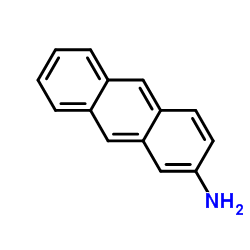
2-Anthracenamine structure
|
Common Name | 2-Anthracenamine | ||
|---|---|---|---|---|
| CAS Number | 613-13-8 | Molecular Weight | 193.244 | |
| Density | 1.2±0.1 g/cm3 | Boiling Point | 414.2±14.0 °C at 760 mmHg | |
| Molecular Formula | C14H11N | Melting Point | 238-241 °C(lit.) | |
| MSDS | Chinese USA | Flash Point | 229.0±15.4 °C | |
| Symbol |

GHS07 |
Signal Word | Warning | |
| Name | anthracen-2-amine |
|---|---|
| Synonym | More Synonyms |
| Density | 1.2±0.1 g/cm3 |
|---|---|
| Boiling Point | 414.2±14.0 °C at 760 mmHg |
| Melting Point | 238-241 °C(lit.) |
| Molecular Formula | C14H11N |
| Molecular Weight | 193.244 |
| Flash Point | 229.0±15.4 °C |
| Exact Mass | 193.089142 |
| PSA | 26.02000 |
| LogP | 3.40 |
| Vapour Pressure | 0.0±1.0 mmHg at 25°C |
| Index of Refraction | 1.766 |
| Stability | Stable. Incompatible with strong oxidizing agents. |
CHEMICAL IDENTIFICATION
HEALTH HAZARD DATAACUTE TOXICITY DATA
MUTATION DATA
|
| Symbol |

GHS07 |
|---|---|
| Signal Word | Warning |
| Hazard Statements | H315-H319-H335 |
| Precautionary Statements | P261-P305 + P351 + P338 |
| Personal Protective Equipment | dust mask type N95 (US);Eyeshields;Gloves |
| Hazard Codes | Xn:Harmful; |
| Risk Phrases | R33 |
| Safety Phrases | S26 |
| RIDADR | NONH for all modes of transport |
| WGK Germany | 3 |
| RTECS | CA9275000 |
| HS Code | 2921499090 |
| Precursor 9 | |
|---|---|
| DownStream 10 | |
| HS Code | 2921499090 |
|---|---|
| Summary | 2921499090 other aromatic monoamines and their derivatives; salts thereof VAT:17.0% Tax rebate rate:9.0% Supervision conditions:none MFN tariff:6.5% General tariff:30.0% |
|
Genotoxicity testing of esterified propoxylated glycerol (EPG).
Regul Toxicol Pharmacol 70 Suppl 2 , S131-42, (2014) Four versions of esterified propoxylated glycerols (EPGs) were evaluated for potential genotoxicity using a range of in vitro and in vivo assays. H-EPG-05 HR/SO 9:1, H-EPG-05 soyate, and H-EPG-14 soya... |
|
|
In vitro toxicological assessment of iron oxide, aluminium oxide and copper nanoparticles in prokaryotic and eukaryotic cell types.
Drug Chem. Toxicol. 38 , 152-61, (2015) Metallic nanoparticles (NPs) have a variety of applications in different industries including pharmaceutical industry where these NPs are used mainly for image analysis and drug delivery. The increasi... |
|
|
Toxicogenetic effects of low concentrations of the pesticides imidacloprid and sulfentrazone individually and in combination in in vitro tests with HepG2 cells and Salmonella typhimurium.
Ecotoxicol. Environ. Saf. 120 , 174-83, (2015) The insecticide imidacloprid and the herbicide sulfentrazone are two different classes of pesticides that are used for pest control in sugarcane agriculture. To evaluate the genotoxic potential of low... |
| EINECS 210-330-9 |
| MFCD00003582 |
| 2-aminoanthracene |
| Anthracen-2-amine |
| 2-Anthracenamine |
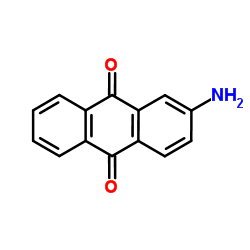 CAS#:117-79-3
CAS#:117-79-3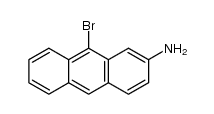 CAS#:1186505-24-7
CAS#:1186505-24-7 CAS#:762-04-9
CAS#:762-04-9 CAS#:613-14-9
CAS#:613-14-9 CAS#:58399-84-1
CAS#:58399-84-1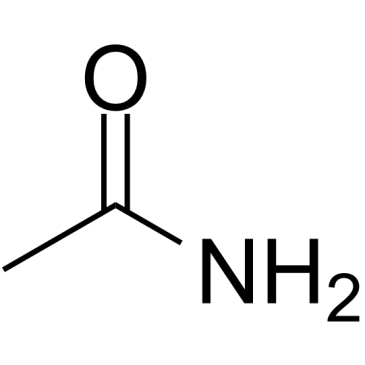 CAS#:60-35-5
CAS#:60-35-5 CAS#:67-56-1
CAS#:67-56-1 CAS#:64-17-5
CAS#:64-17-5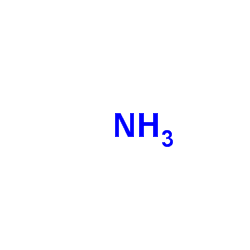 CAS#:7664-41-7
CAS#:7664-41-7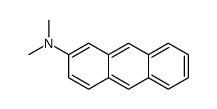 CAS#:29880-73-7
CAS#:29880-73-7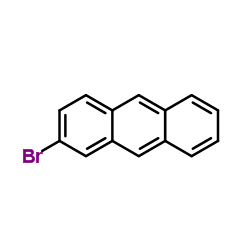 CAS#:7321-27-9
CAS#:7321-27-9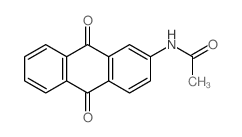 CAS#:3274-22-4
CAS#:3274-22-4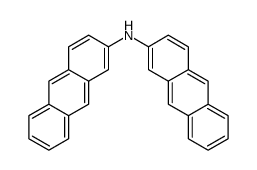 CAS#:31689-21-1
CAS#:31689-21-1 CAS#:36761-80-5
CAS#:36761-80-5 CAS#:17017-03-7
CAS#:17017-03-7 CAS#:2141-42-6
CAS#:2141-42-6 CAS#:70902-55-5
CAS#:70902-55-5